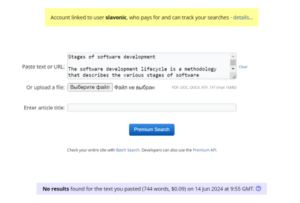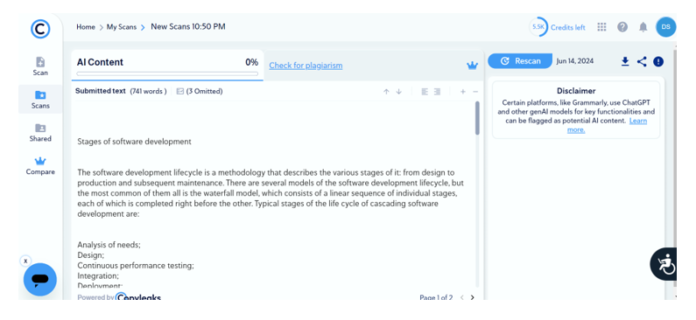The software development lifecycle is a methodology that describes the various stages of it: from design to production and subsequent maintenance. There are several models of the software development lifecycle, but the most common of them all is the waterfall model, which consists of a linear sequence of individual stages, each of which is completed right before the other. Typical stages of the life cycle of cascading software development are:
- Analysis of needs;
- Design;
- Continuous performance testing;
- Integration;
- Deployment;
- Service;
Each stage of the software development cycle is important and must be carried out methodically to ensure effective and high-quality development. Nevertheless, flexible cycle models have also gained popularity in recent years with a strong focus on flexibility, collaboration, and iteration.

Identification of needs
Of course, if you aim to ensure successful software development, it is important to clearly and precisely define the goals of the project you are working on. Try to understand their needs and expectations and assess their implications for development. After that consider various constraints, such as deadlines, budget, or available resources. This step allows you to evaluate the feasibility of the plan before moving on.
Planning
First, define goals so that they can be really achieved. To do this, you first need to identify the most necessary tasks (script development, development of various functions, tests, writing content, translation into different languages intended for distribution, integration and design), and then determine the rendering deadlines for each of these tasks. This way it will be easier for you to assign them to different people in your team and all that remains is to set up monitoring to track the progress of the project.
Design
Designing a solid architecture is of paramount importance. Be sure to identify the various key components of the system (modules, databases, user interfaces) before determining how they will interact with each other.
Then, the role of interface and user experience (UI/UX) experts is to create an ergonomic and functional software prototype. Always remember that your architecture must provide the opportunity for practical maintenance and subsequent development.
This step ensures that your software or application is properly structured, understandable, and adaptable to future needs.

Translation and localization
Are you planning to launch your app in international markets? In order to attract potential customers from abroad and offer them the best user experience, your translation must be localized, accurate, and consistent. To put all the chances on your side you should entrust this step to a technical translation agency specializing in software translation and localization. It is also important to take into account all cultural characteristics of your target audience.
Development
It is definitely the most time-consuming part. The reason is that this step involves choosing the right technologies that are best suited for your project. Among the criteria to consider are the integration of the tool with other project devices, its applicability to the environment, or your team’s previous experience with the tool in question.
Programming the source code by developers also requires a thorough methodology to identify and fix bugs as soon as possible. Only if these conditions are met, you will receive high-quality software.
Testing
After the code is written by the developers, it still needs to be checked and then approved to ensure its proper functioning. The testing and quality assurance teams will then work together to report bugs as quickly as possible. Testing can be manual or automated, depending on the established procedure. The goal is to provide flawless software.
Deployment and maintenance
Deployment involves deploying software in a real-world environment and providing access to it to end users. In this case, it is important to carry out preventive maintenance to correct potential errors.
With the “test and learn” approach, consider collecting user feedback (for example, in the application form) in order to make the necessary adjustments and optimize the functioning of your product. It will help you to adapt your operating system to the needs of consumers so that you will have high-quality software.
To create high-performance and cost-effective software or applications that provide the solutions that users are looking for, be sure to follow the methodological process. Identification of needs, project planning, functional and technical design, international translation and localization, development, testing, then implementation and maintenance… Each of the stages of software development should be clearly defined, performed, and monitored. By following this clearly defined path, you significantly increase your chances of producing high-quality software.







